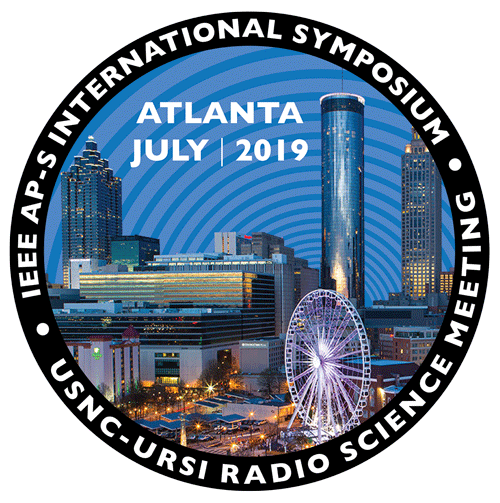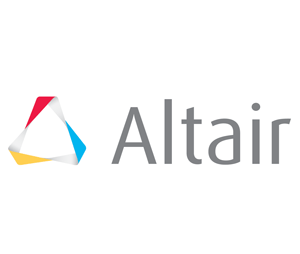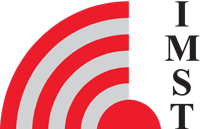Student Design Contest
DIY antenna characterization setups
Travel to the 2019 IEEE AP-S/USNC-URSI and win up to US $1,500!
Finalist Teams
Please join us to congratulate the Finalists for the AP-S/URSI 2019 Student Design Contest, and remember to visit the teams and view their designs at the Hilton Atlanta on Tuesday, July 9th.
GUC - German University in Cairo (Egypt)
| Title: |
DIY antenna characterization system using universal UHF RFID hemispherical dome |
| Faculty Advisor: |
Hany Fathy Hammad |
| Members: |
Monica Wasfy William, Nada Khaled Sayed Abdelhadi, Samar Abdelatty Sayed Elmeadawy, Yasmine Abdalla Zaghloul |
KnowAntenna - Universidade de Aveiro (Portugal)
| Title: |
DIY antenna characterization setup |
| Faculty Advisor: |
João Nuno Matos, Armando Rocha |
| Members: |
Lucas Leitão, Manuel Neves, Guilherme Maniezo, Tânia Ferreira, Francisco Pinto |
Team ACE - Brigham Young University (USA)
| Title: |
Fast Antenna Pattern Measurements with Multipath Suppression |
| Faculty Advisor: |
Karl Warnick |
| Members: |
Enoch Boekweg, Travis Bonner, Sean Crawford, Jacob Holtom, Shelby Larsen |
UNAL-APS- National University of Colombia (Colombia)
| Title: |
UNAL-APS- National University of Colombia (Colombia) |
| Faculty Advisor: |
John Jairo Pantoja Acosta |
| Members: |
Cristian Felipe Cadavid Insuasti, Sebastián Chavez Martínez, Julian Navarrete Rubio, Leonardo Pérez Levano, Nathaly Elisabeth Ruiz Solano |
UNM - University of New Mexico (USA)
| Title: |
Novel and Instructive Antenna Measurement Method |
| Faculty Advisor: |
Christos Christodoulou |
| Members: |
Ralph Gesner, Arjun Gupta, John Argyres, Daniel Feaster, Delaney Heileman |
WPS-UTRGV - University of Texas Rio Grande Valley (USA)
| Title: |
Electromagnetic Metasurface for Wireless Power System |
| Faculty Advisor: |
Nantakan Wongkasem |
| Members: |
Tito Espino, Luis de la Garza, Daniel Salazar |
Join the 10th IEEE Antennas and Propagation Society (AP-S) Antenna Design Contest! Design and build a system to visualize in an easy way the properties of an antenna system. The top 6 teams will receive up to US $2,500 in travel funds to attend the IEEE Antennas and Propagation Symposium in Atlanta, Georgia, July 7-12, 2019 to demonstrate their working systems. From these 6 teams, 1st, 2nd and 3rd place winners will be announced at the 2019 IEEE AP-S Awards Presentation at the conference and will receive cash awards of US$1,500, $750 and $250, respectively. Final reports will have the opportunity to be considered for publication in the IEEE AP Magazine.Important deadlines are November 23, 2018 and March 31, 2019.
Goal: Propose a setup that characterizes/demonstrates the properties of an antenna system and provide educational material to explain these properties.
Specifications
- The setup must be able to measure/demonstrate some properties of an antenna system. These properties include (but are not limited to) impedance, efficiency, frequency of operation, bandwidth, gain, polarization, beam width, RCS, MIMO performance…
- The results must be displayed in real time.
- The setup and procedure must be easy to understand for non-specialists.
- The setup must be easy to reproduce in a classroom.
- The setup must be designed using non-dedicated/non-specialized equipment. The teams are encouraged to use devices as mobile phones, small drones, or any commercially available device that is NOT specifically intended for antenna/RF testing.
- The teams have to explain the theory behind their demonstration setup in a simple way (so that it can be understood by non-engineers.)
- Step-by-step instructions to allow reproducing the system for anyone who wants to use it for teaching purposes have to be provided.
- Merit will be assigned to designs based on the following criteria, equally weighted:
- Creativity and justification of the design;
- Capability of the system to show the properties of the system under test
- Use of non-standard equipment and DIY strategies;
- Quality of the experimental model and results;
- Educational value and clarity of the DIY/demonstration instructions.
- Existing licensed software at the university (e.g., electromagnetic simulation software) or free software may be used. Any other commercial software used for the project should be included in the budget. The total production cost for the entire system must be less than US$1,500.
Eligibility
The team should consist of 2 to 5 students, with at least 50% being undergraduate students. For a 5-year Bachelor-cum-Master degree program, students in years 1 to 3 are considered undergraduates. Each team should be advised by a professional mentor who is a member of the IEEE AP-S, but the work needs to be done primarily by the students. No student or mentor should be involved in more than one team.
Application and Review Process
- All applicants must submit a preliminary design by November 23, 2018. It must include:
- A proposal limited to two pages and in 12-pt Times New Roman font that includes
- A detailed description of the setup and the properties to be measured.
- A detailed description of the system to be built.
- A bill of materials (up to US $1,500).
- A letter from a professional mentor, such as a professor or engineer in industry indicating agreement to supervise the project (the students being mainly responsible for doing the work). The mentor must be an AP-S member (please provide IEEE membership number) and must verify that all team members are graduate or undergraduate students at a university, college, or technical school. The proposal and letter must be integrated into a single PDF file named TeamName.pdf.
- The college of reviewers will assess each preliminary design based on likelihood of achieving the design goal and specifications, creativity, and quality of written materials. Six semi-finalist teams will be selected by December 15, 2018 and will receive US$1,500 each to build and test their designs.
- Each of the six semi-finalist teams must submit their final design by March 31, 2019 in the form of a video demonstration of the working system (≤ 5 minutes), step-by-step instructions to replicate the system (≤ 5 pages) in PDF format (≤ 5 MB file size), and a final report (≤ 5 pages) in PDF format (≤ 5 MB file size). Submission instructions for the video demonstration will be provided later (some videos from previous contests are available on YouTube – search for “AP-S Student Design Contest”). The report should follow the two-column format of the IEEE Transactions on Antennas and Propagation and include:
- A detailed description of the system’s measurement capabilities
- An easy-to-understand of the theory behind the measurement system
- A list of parts and materials required, including where to obtain them and costs.
- Photos of the final system.
- Measurement results obtained using the system.
- Biographies (100 words or less each) and photos of all design team members.
- Several Design Contest Judges will be appointed to assess each semi-finalist’s design based on achieved performance, creativity, completeness of the description, functionality of the system as determined by the video, and quality of written materials. Six finalist teams will be selected by April 30, 2019 to receive stipends of up to US$2,500 per team to travel to and attend the IEEE AP-S Symposium. The stipend is intended to cover equipment shipping costs and all expenses for one team representative; however, it may be divided among multiple team members.
- The finalists will be expected to demonstrate their working systems during the Symposium and attend the Awards Banquet. Two celebratory dinner tickets will be reimbursed per team, for one team member and the team mentor. Each team should bring all necessary equipment for the demonstration. The Design Contest Judges will assess the final demonstrations and take into account the final reports to select the 1st, 2nd, and 3rd prize winners, who will receive certificates and cash prizes of US$1,500, $750 and $250, respectively. The prize winners will be announced at the Awards Presentation.
- After the Symposium, the finalists may revise their final reports for possible submission and publication in the IEEE AP Magazine under the Education Column (the reports will be reviewed and must meet Magazine standards.) Team mentors may either be listed as a co-author or acknowledged in the paper.
How to Submit Materials
Send all questions and materials to designcontest@ieeeaps.org with the subject line “2019 IEEE AP-S Design Contest.” Messages without this subject line may not be received. All submitted materials must be in PDF format according to the guidelines above.



